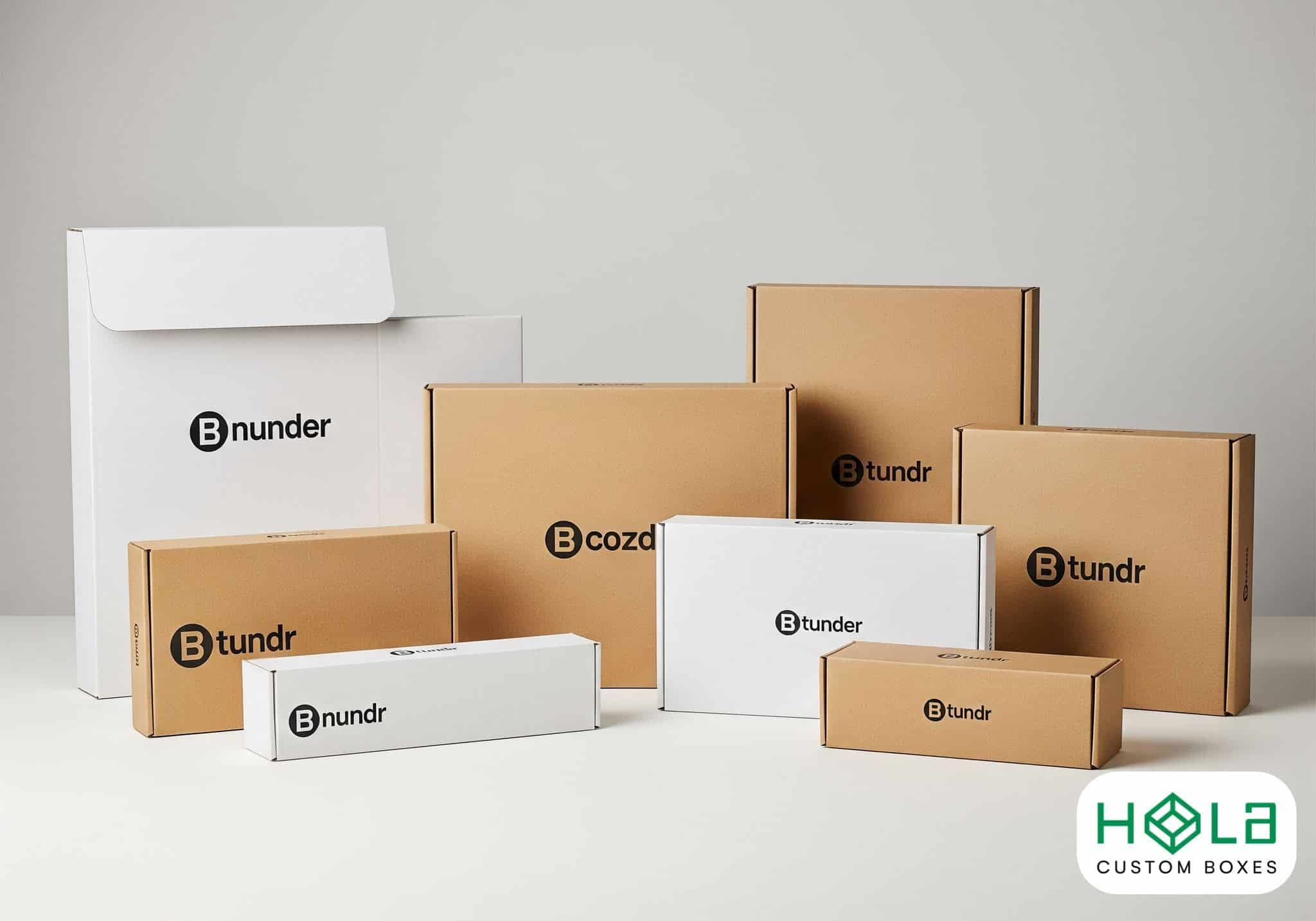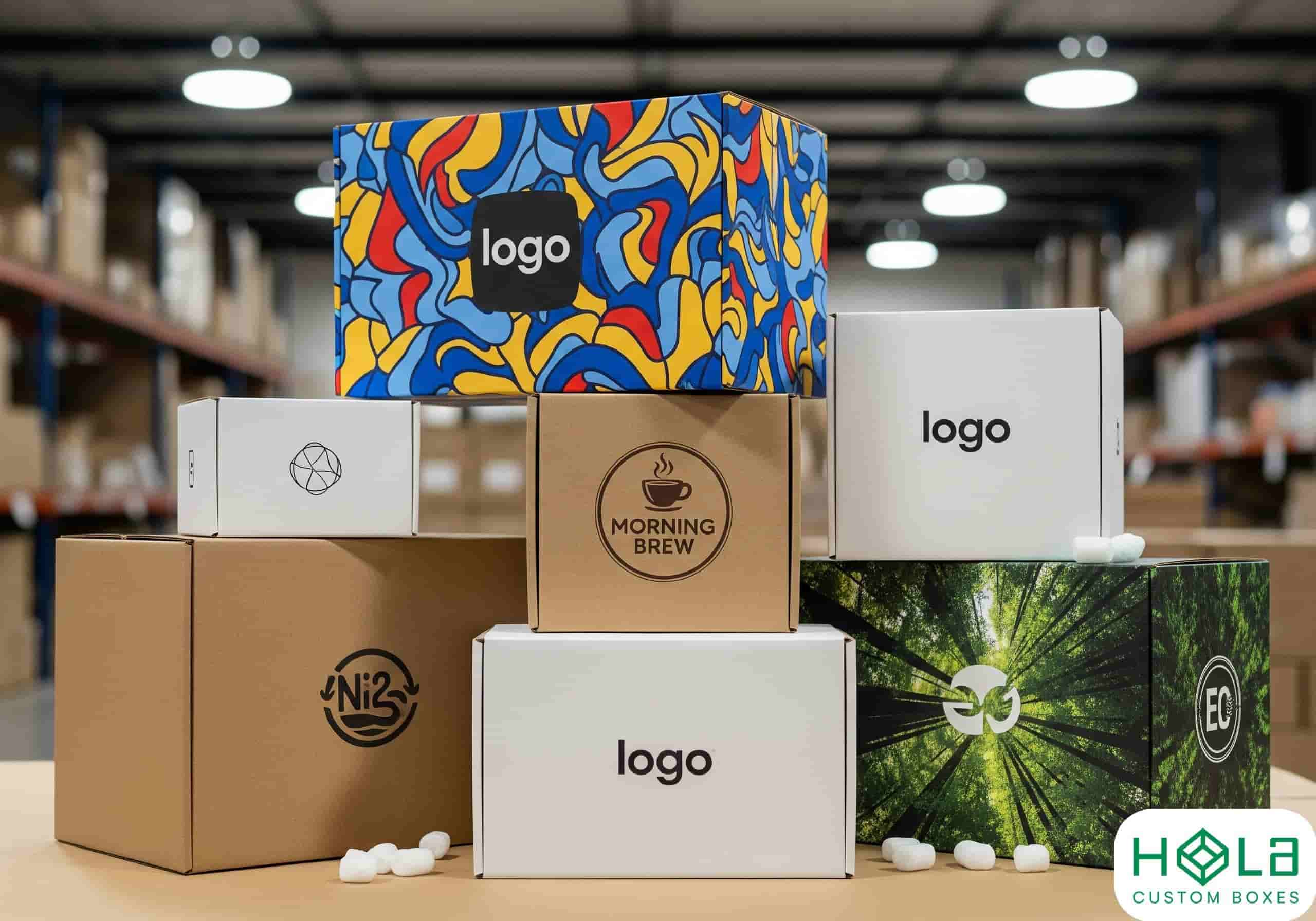The Difference Between Product Packaging and Shipping Packaging
2025-09-17 15:09:11
Product packaging focuses on branding and creating an emotional connection with you, using appealing designs and materials. It attracts you on the shelf. In contrast, shipping packaging prioritizes practicality, ensuring your purchases arrive safely and intact, using durable materials to withstand transit challenges. While product packaging enhances your buying experience, shipping packaging emphasizes protection. Understanding their differences can greatly impact your perception of a brand and its products. You’ll discover even more insights on this topic ahead.
Key Takeaways
- Product packaging focuses on branding and creating an emotional connection, while shipping packaging prioritizes protection during transit.
- Visually appealing materials are used in product packaging to attract consumers, whereas shipping packaging emphasizes durability and functionality.
- Product packaging enhances customer experience, while shipping packaging ensures safe delivery without aesthetic considerations.
- Sustainable materials in product packaging can boost brand perception, while shipping packaging emphasizes quality and reliability for customer satisfaction.
- Effective packaging strategies balance aesthetics in product packaging with practicality in shipping packaging to reduce waste and improve overall efficiency.
Understanding Product Packaging
Product packaging plays a crucial role in your buying experience. It’s not just about protecting the product; it’s about creating an emotional connection. The design elements—like colors, typography, and imagery—can influence your perception and even your purchasing decision. You often find yourself drawn to packaging that stands out on the shelf or resonates with your personal style.
Material choices are equally important; they can convey quality and sustainability, impacting how you feel about the brand. Whether it’s sleek glass, eco-friendly cardboard, or vibrant plastic, the materials you encounter can enhance or detract from your overall experience. Understanding these aspects helps you appreciate the thought behind the packaging, making your buying journey more enjoyable and meaningful.
Shelf-ready retail packaging boxes focus on branding and clear presentation.
The Role of Shipping Packaging

Shipping packaging is essential for ensuring that your purchases arrive safely and intact. It plays a crucial role in protecting items during transit, preventing damage from external factors like moisture or impacts. High-quality shipping materials, such as sturdy boxes and cushioning materials, enhance packaging durability, giving you peace of mind. When you choose the right shipping packaging, you’re not just safeguarding your products; you’re also enhancing the overall customer experience. An intact package reflects your brand’s commitment to quality, making customers more likely to return. Remember, effective shipping packaging isn’t just about looks; it’s about functionality and protection. By prioritizing shipping materials that ensure durability, you can help foster trust and satisfaction among your customers.
Key Differences Between Product and Shipping Packaging
While both product and shipping packaging serve important roles, they differ significantly in their purpose and design. Product packaging focuses on showcasing the item, emphasizing branding, and enhancing the customer experience through thoughtful product design. It's often made from visually appealing packaging materials that attract buyers and communicate the product's value.
On the other hand, shipping packaging prioritizes protection and efficiency. It uses durable and often more utilitarian packaging materials to safeguard the product during transit and handling. Shipping packaging is designed for practicality, ensuring that items arrive safely at their destination without concern for aesthetics. In summary, while product packaging entices customers, shipping packaging ensures the product's safe journey.
Shipping protection is best handled by custom merch boxes with inserts.
Importance of Choosing the Right Packaging
Choosing the right packaging can significantly impact your business's success. It influences not only how your products are received but also how your brand is perceived by consumers. When you prioritize sustainability considerations, you show your customers that you care about the environment, which can enhance their loyalty and boost your brand image. Consumers are increasingly drawn to brands that reflect their values, and eco-friendly packaging can set you apart in a crowded market. Moreover, effective packaging ensures your products arrive safely, reducing returns and dissatisfaction. By making thoughtful packaging choices, you can elevate consumer perception, foster trust, and ultimately drive sales. Remember, the right packaging isn’t just about looks; it’s about creating a lasting impression that resonates with your audience.
Fragile or premium SKUs can use custom rigid gift packaging boxes inside shippers.
Best Practices for Effective Packaging Strategies
Effective packaging strategies can make a significant difference in how your products are perceived and delivered. To enhance the consumer experience, prioritize using sustainable materials that reflect your brand’s values. Not only do eco-friendly options resonate with environmentally conscious customers, but they also help reduce your carbon footprint.
Make sure your packaging is visually appealing and functional, ensuring it protects your product during transit while showcasing your brand's identity. Consider using minimal packaging to reduce waste, and clearly communicate important information on your labels.
Finally, test your packaging solutions to ensure they meet customer expectations and withstand shipping conditions. By focusing on these best practices, you’ll create a positive impression and foster long-term loyalty with your consumers.
Moisture/odor barriers: custom mylar bags where appropriate.
Conclusion
In the end, choosing the right packaging is like dressing for an important occasion. Just as you wouldn’t wear gym clothes to a wedding, you shouldn’t use the wrong type of packaging for your products. It’s essential to protect your items while showcasing them effectively. Remember, the first impression counts—whether it’s the sleek box that catches a customer’s eye or the sturdy shipping materials that ensure they arrive safely. Invest wisely, and your products will shine.
